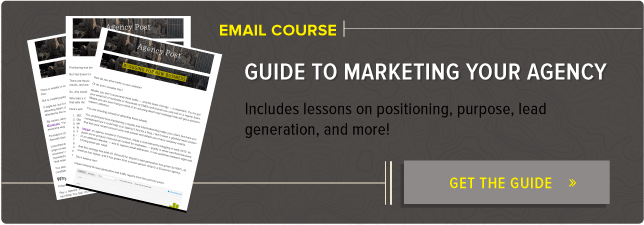
In 1982, Colgate decided to jump on the frozen food craze by releasing a line of Colgate-branded frozen entrees called Colgate Kitchen Entrees.
At the time, the growing ready-to-eat meals market seemed like a great space for an already-successful company like Colgate to expand their presence. There was just one big problem for Colgate: their brand.
Colgate was already well-known as a toothpaste brand, and the introduction of a ready-to-eat meal product under the same brand name and logo didn't sit well with consumers. Colgate had spent years branding themselves as a toothpaste company, and the new product just wasn't consistent with their existing brand image.
They were trying to sell food under a brand that people heavily associated with toothpaste -- it just didn't work.
This now infamous example of branding-gone-wrong illustrates the immense impact branding has on how a company's actual products are received. Colgate's frozen entrees might have been absolutely delicious, but without proper branding, the product was a major flop.
To help you navigate the challenging process of building a sustainable brand for your company, we've put together a list of common branding blunders to avoid at all costs. Check them out below, and make sure your company isn't already accidentally making any of these mistakes.
6 Branding Mistakes Undermining Your Image
1) Inconsistency Across Different Platforms and Mediums
The first rule of building a strong brand is consistency. Presenting a consistent identity to your audience fosters a sense of trust and comfort for consumers, and can go a long way in building an easily recognizable image for your company. A company that presents itself inconsistently ends up appearing unprofessional, disjointed, and even untrustworthy.
Consistency starts with coordinating your visual assets across every place your company is represented: your website, social media accounts, ads, print materials, etc. This isn't to say you should slap your logo on everything and just call it a day -- to align your visual identity in an efficient, reproducible way, you need a brand style guide.
What's a brand style guide? It's a simple rulebook of your company's preferred fonts, colors, imagery, logos, and other visual assets. A complete style guide goes beyond design assets, and also includes a set of standards for your brand's values, voice, and written elements. Having a style guide in place is a handy way to make sure you're presenting a consistent, cohesive message in all the places your brand appears. Think of it as an insurance policy for your brand.
2) Relying Too Heavily on Design Trends
Keeping up with the latest branding and design trends is a great way to make sure you're presenting your company in a fresh, contemporary way, but there's a big difference between modernizing your brand and losing your core identity in pursuit of the hottest new thing.
It can be easy to get swept up in what looks cool at the moment, but remember that your brand will likely need to weather multiple waves of design trends without looking dated. If you commit too heavily to a trend that turns out to be a ephemeral blip in the greater design landscape, you risk making your brand look dated -- fast.
As a general rule, use design trends as a source of inspiration, but don't rely on them too heavily when planning your next big redesign.
3) Straying Too Far From What Made you Successful in the First Place
If you're considering a brand redesign, don't stray too far from what made your brand successful and distinct in the first place. You want your current audience to recognize you post-redesign. Big, abrupt changes can alienate even loyal fans of your brand.
There's no better cautionary tale than Gap's now-infamous logo redesign blunder. In 2010, the casual clothing retailer scrapped their classic square logo in favor of a drastically different, decidedly minimal new direction:

Image via: Designer Daily
According to a Gap spokesperson at the time, the radical design shift was intended to transition the brand's image from "classic, American design to modern, sexy, cool." Unfortunately, that's not exactly what happened.
It would be an understatement to say that the logo was poorly received. The backlash against the aggressive change resonated throughout the internet, and less than one week after the new logo was announced, Gap decided to go back to their roots and re-adopt their original blue box logo.
The lesson: recognize your company's core image and values, and keep them at the forefront of your mind during any redesign process.
4) Attaching Your Brand to the Wrong Things
When it comes to branding, more is not more. In other words, use your company name and logo selectively and sparingly -- especially when it comes to branded products, sponsorships, and events.
When you attach your brand name to something, it should reflect and be compatible with your brand's values and voice. When a brand partners with another company or product that doesn't directly relate to or mesh well with their own message, it can seem inconsistent and untrustworthy to consumers.
For example, Disney came under fire in 2009 for releasing Hannah Montana-branded cherries. The weird move seemed self-involved to consumers, and even left fans of the children's TV show saying ... "wait, what?"

Image via: Buzzfeed
With no real connection between cherries and the Hannah Montana brand, it's clear that this move from Disney can be classified as a branding blunder. Don't fall into the same trap: choose your own brand affiliations and products with care.
5) Not Thinking About How Your Brand Will be Received Globally
When crafting your brand message, make sure you take into consideration how it might be perceived around the world. Even if you're not currently a company that operates internationally, it's still worth knowing if you've inadvertently created an offensive brand message that could make scaling your brand globally problematic.
In one infamous example of global branding gone awry, Pepsi launched in China with a word-for-word translation of their American slogan: Pepsi brings you back to life.
Unfortunately for Pepsi, the direct translation of their slogan turned out to actually mean, "Pepsi brings your ancestors back from the grave." You can probably guess that this didn't go over well with consumers in China, where ancestors are revered.
The key takeaway? There is no "one-size-fits-all" approach to global branding. Something that works in one place might spell absolute disaster for your brand in another location. If you think you might one day want to take your brand global, it's best to sniff out potential issues in advance -- and be prepared to localize your message.
6) Using Copy That Doesn't Accurately Describe Your Brand
Too many brands fall victim to copywriting that's too vague, too over-the-top, or just doesn't paint an accurate, stand-out picture of their brand.
To position your brand in a way that distinguishes you clearly from your competitors, you can't rely on the same buzzwords everyone else is using. Find one thing that makes you truly unique, and run with it. But be wary of going over-the-top -- for example, if the product or service you're offering doesn't truly revolutionize the industry, don't use "revolutionize" in your brand message. Find something that's unique and accurate.
When it comes to writing good brand copy -- if you aren't in a position to hire a professional -- use this old advertising and sales trick: Focus on features, not benefits.
For example, if I'm trying to sell you an amazing new snow shovel, I could tell you that it'll help you shovel more snow (the feature), but I'll have better luck making my brand stand out if I instead focus on the benefits: You'll be able to sleep an hour later in the morning because shoveling your car out of the snow with this fantastic shovel will only take you half the time (the benefit).
Did you run into any branding mishaps while developing a brand for yourself or a client? Let us know in the comments!

No comments:
Post a Comment